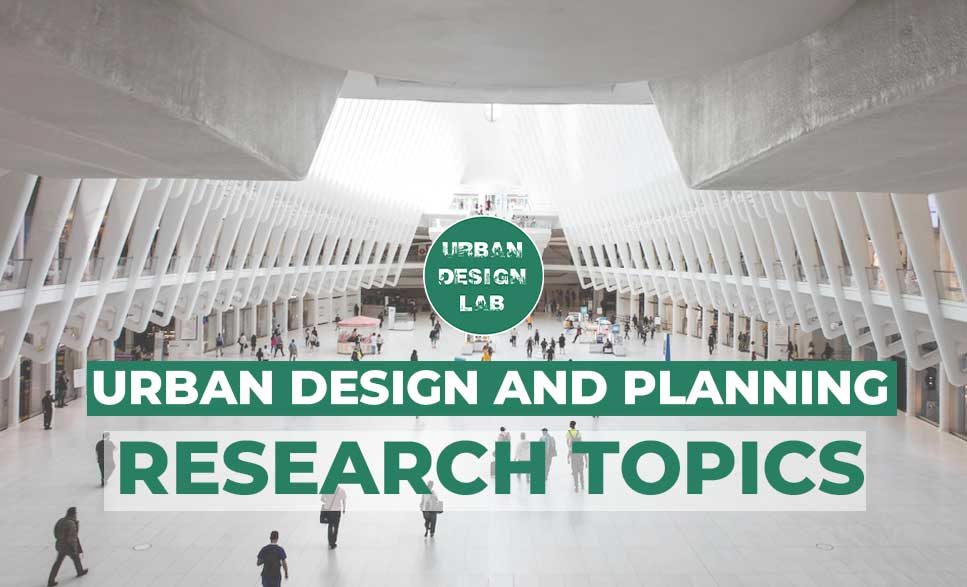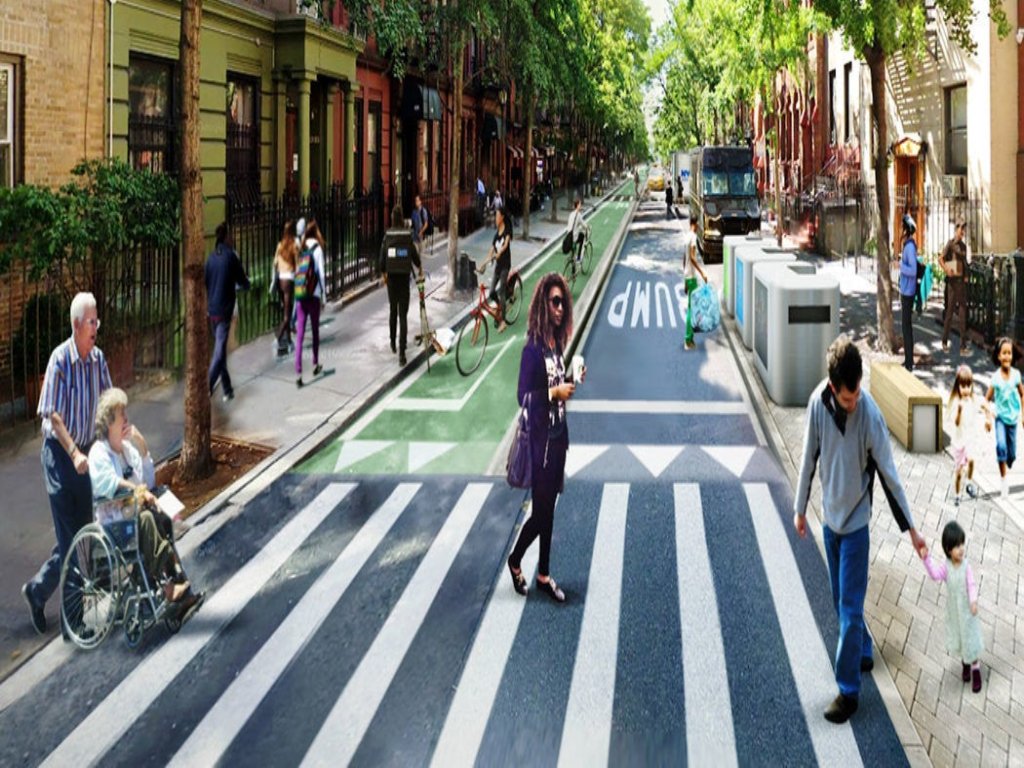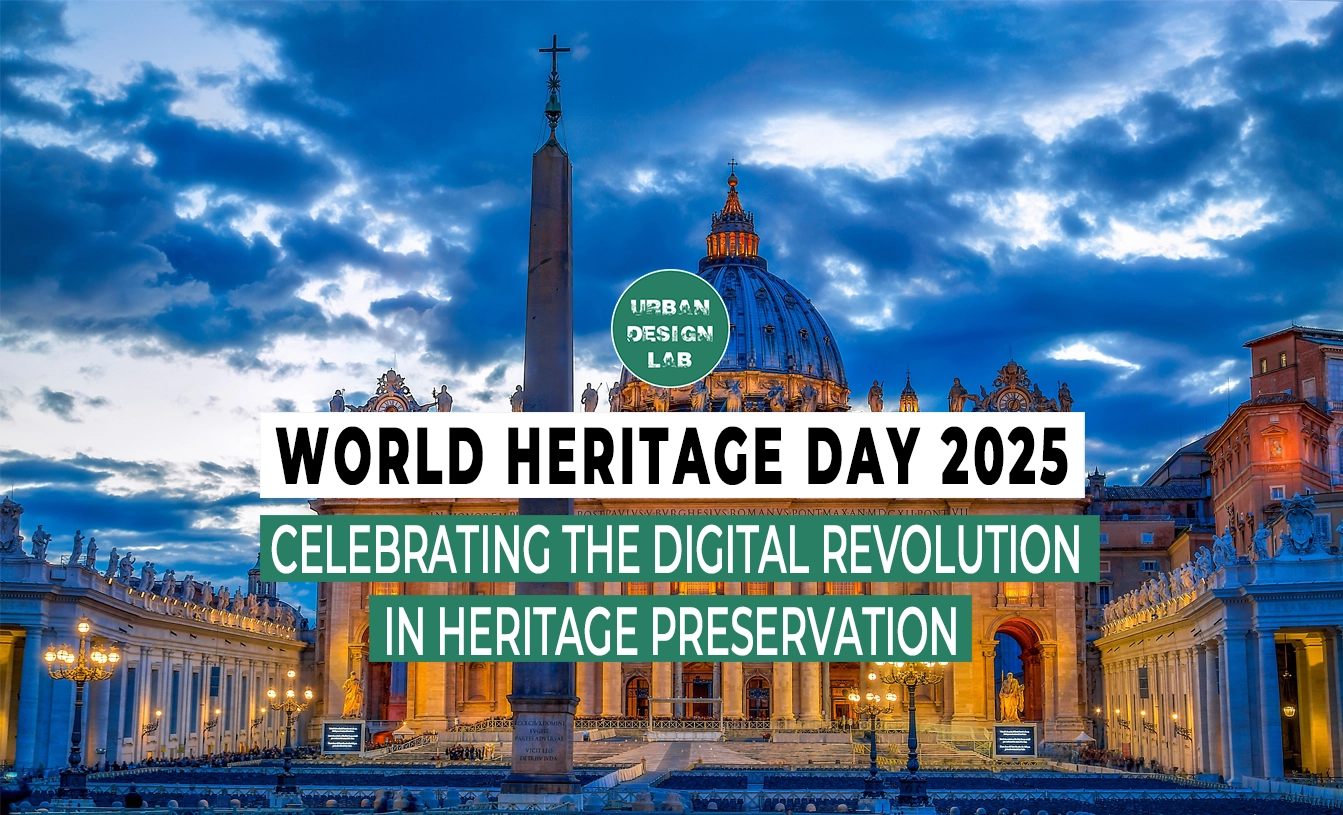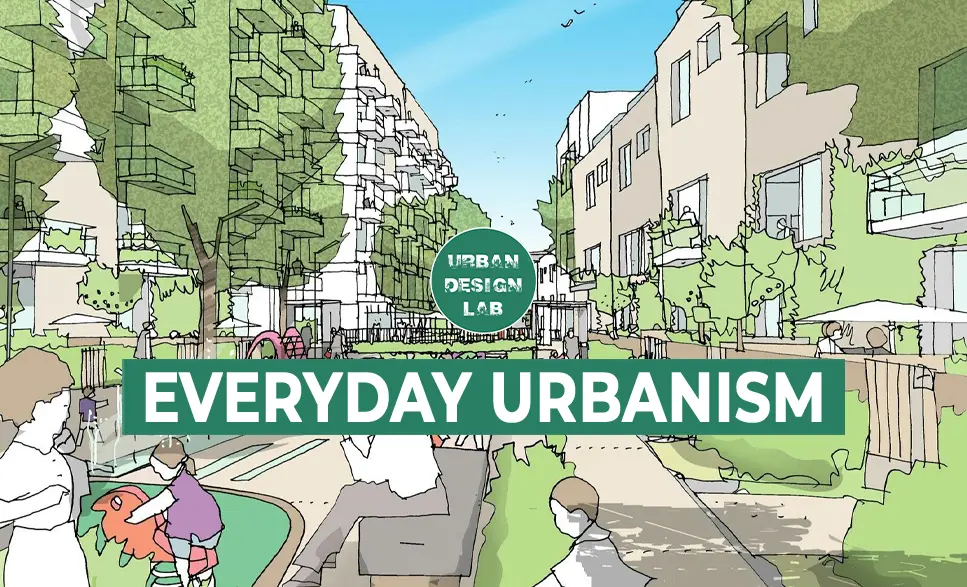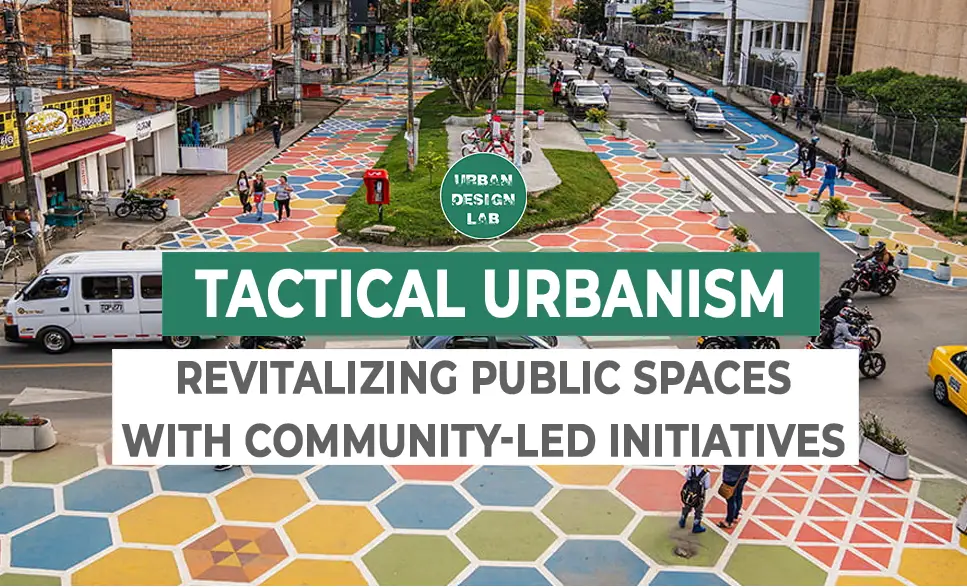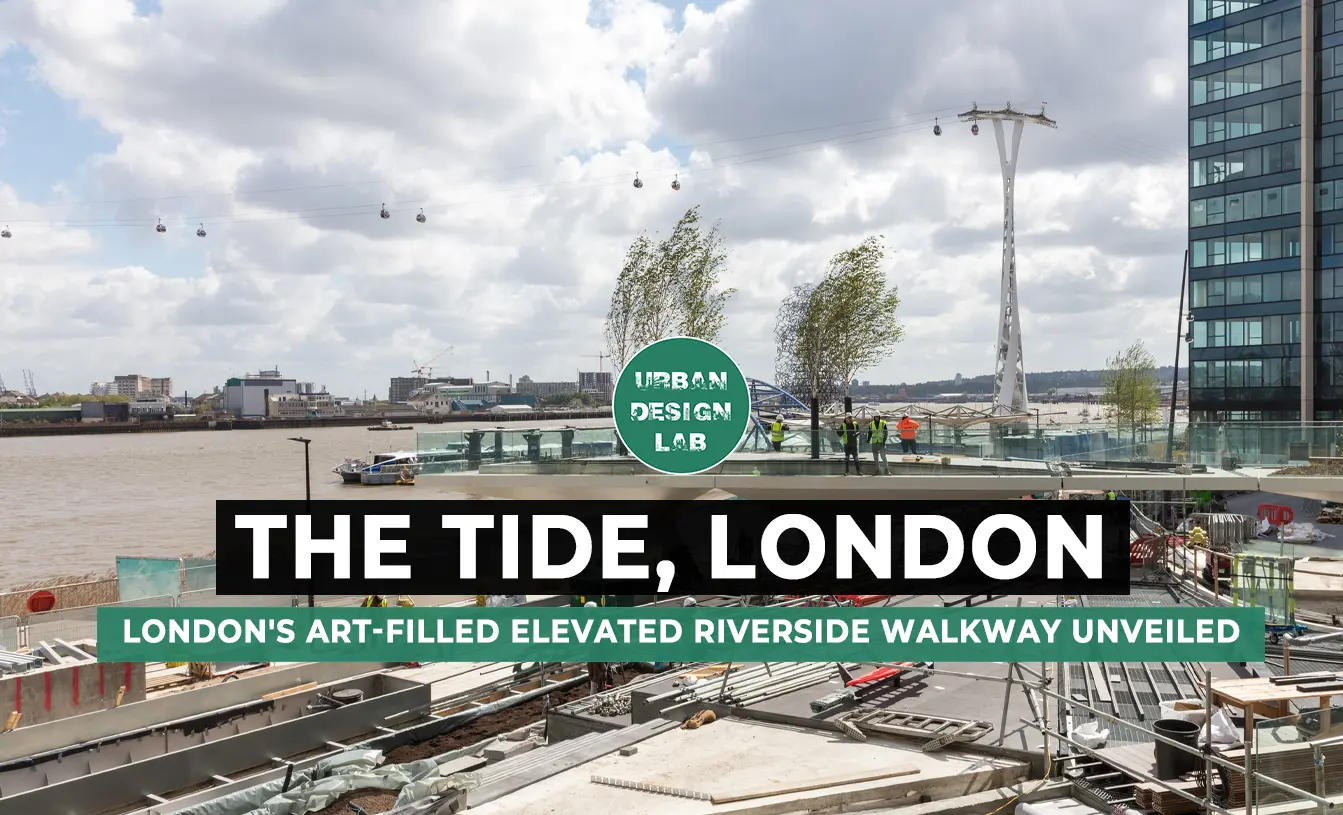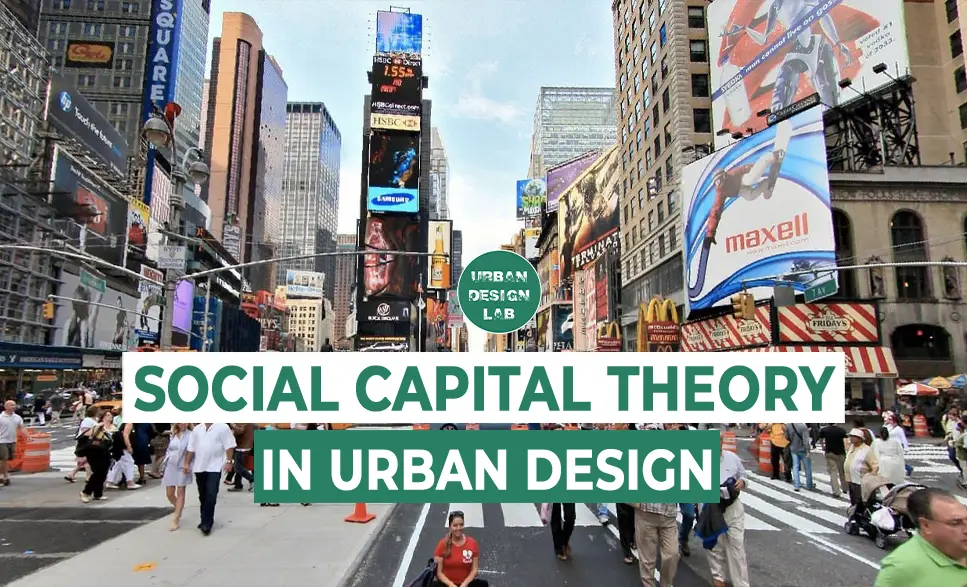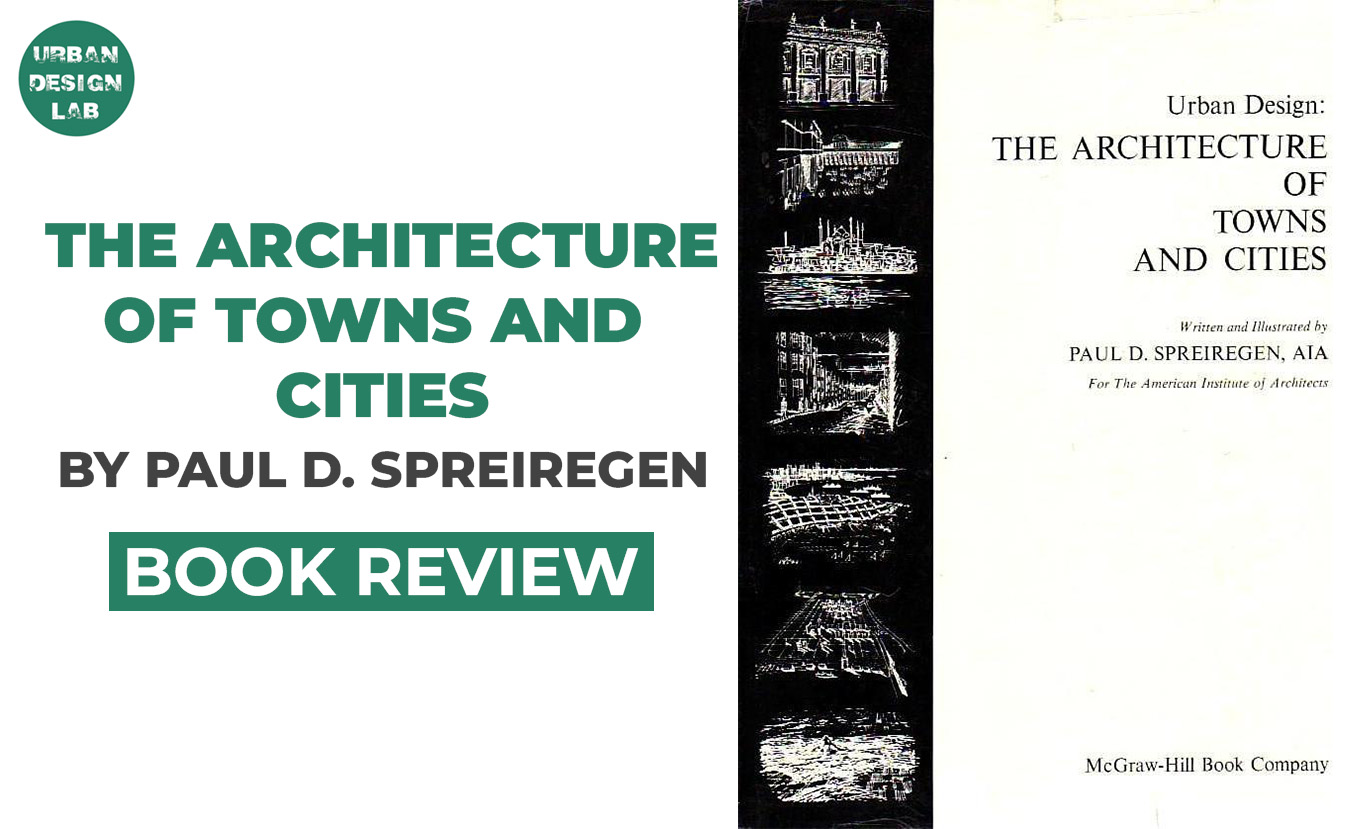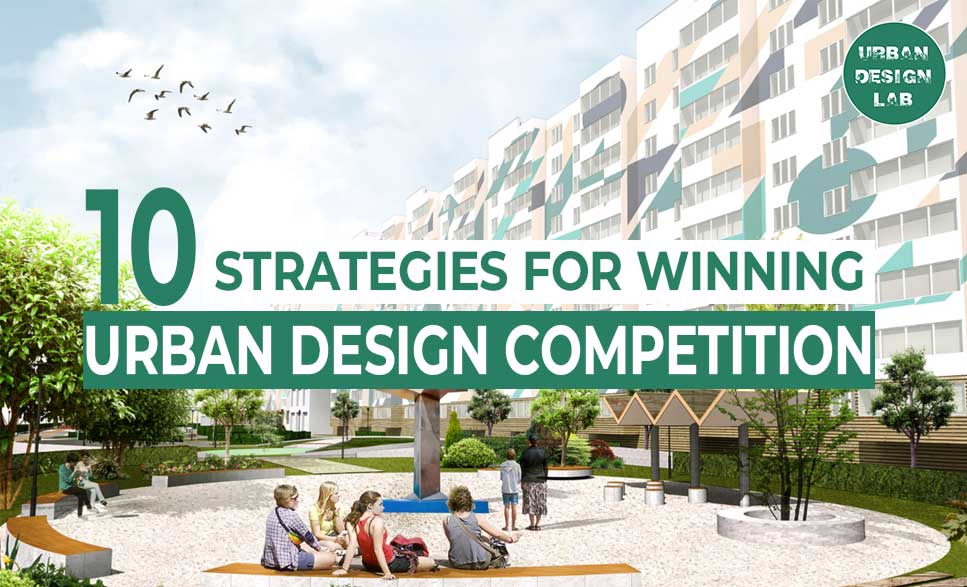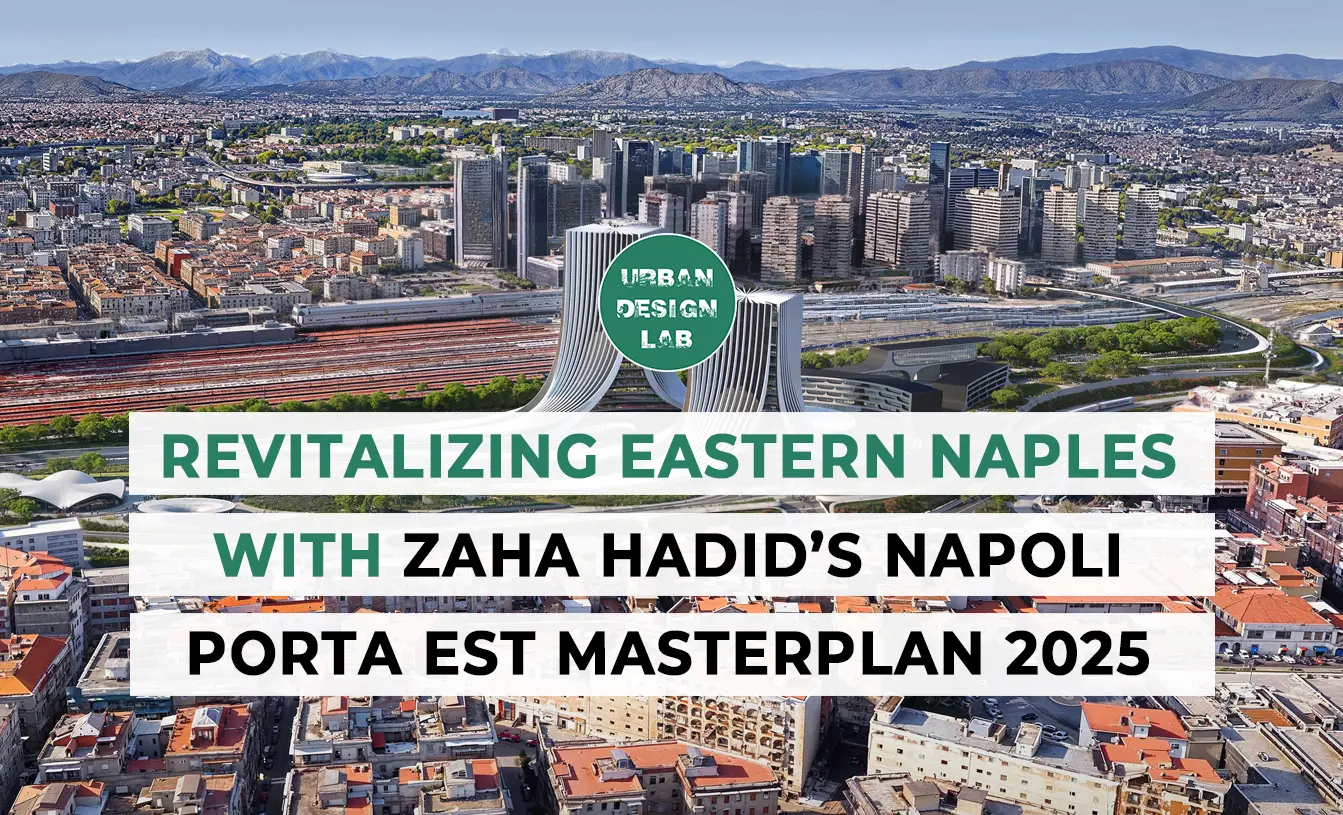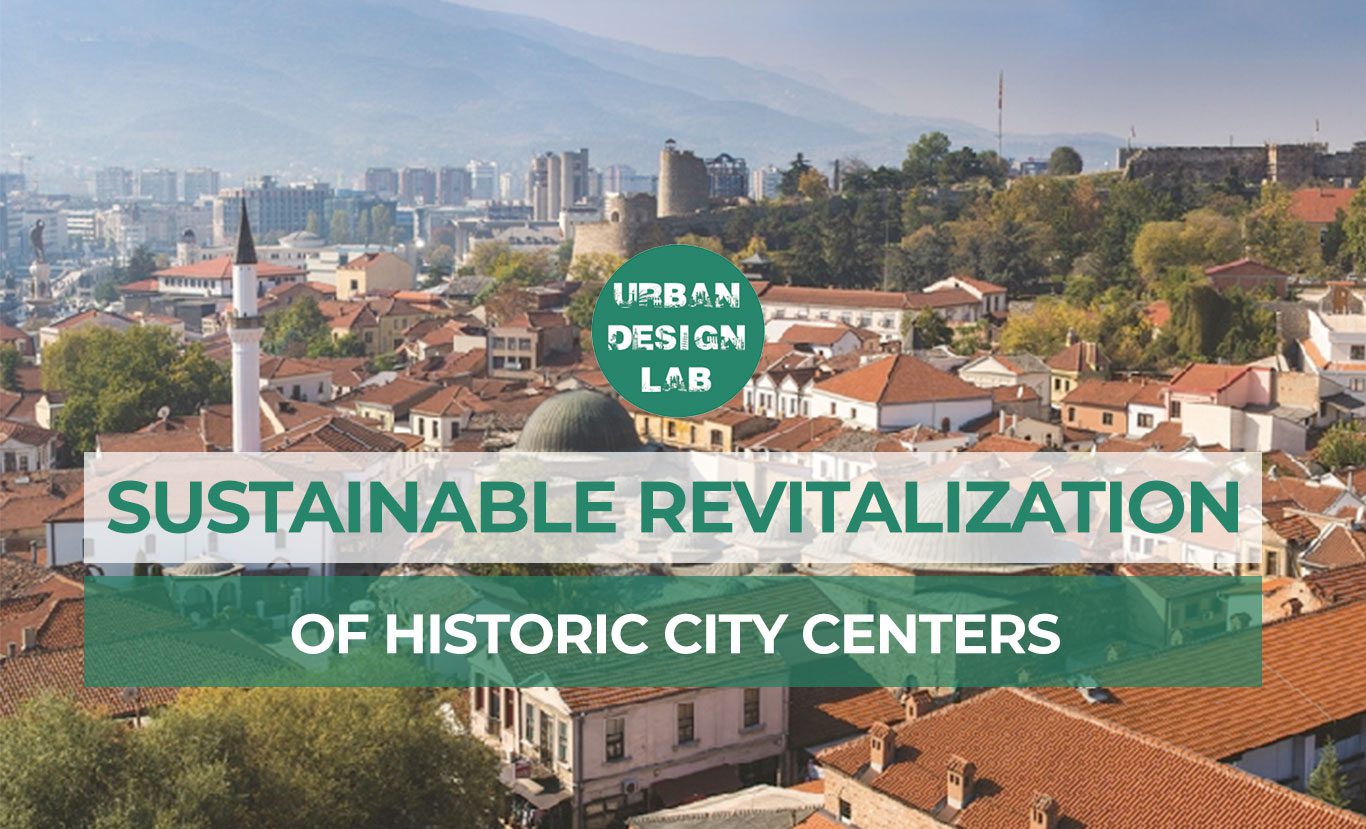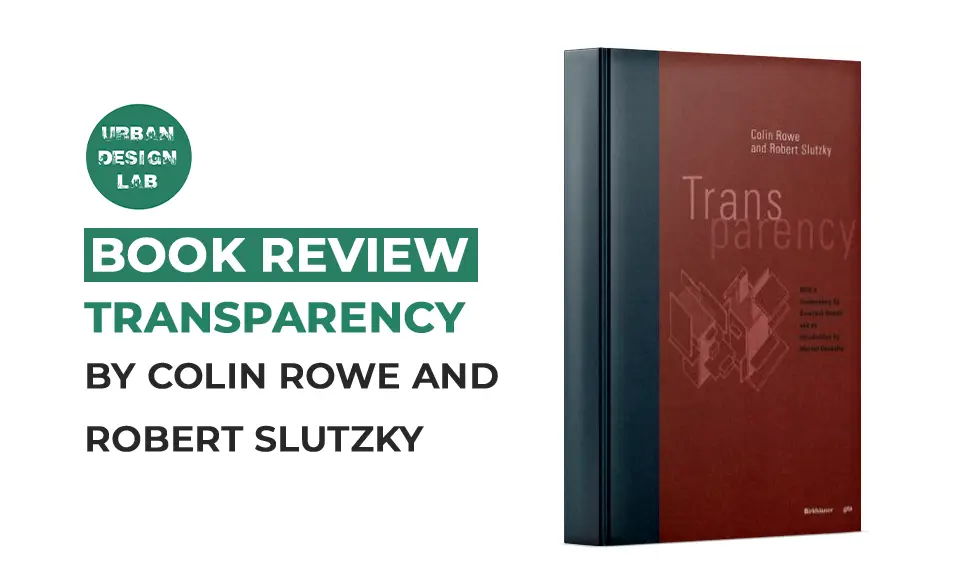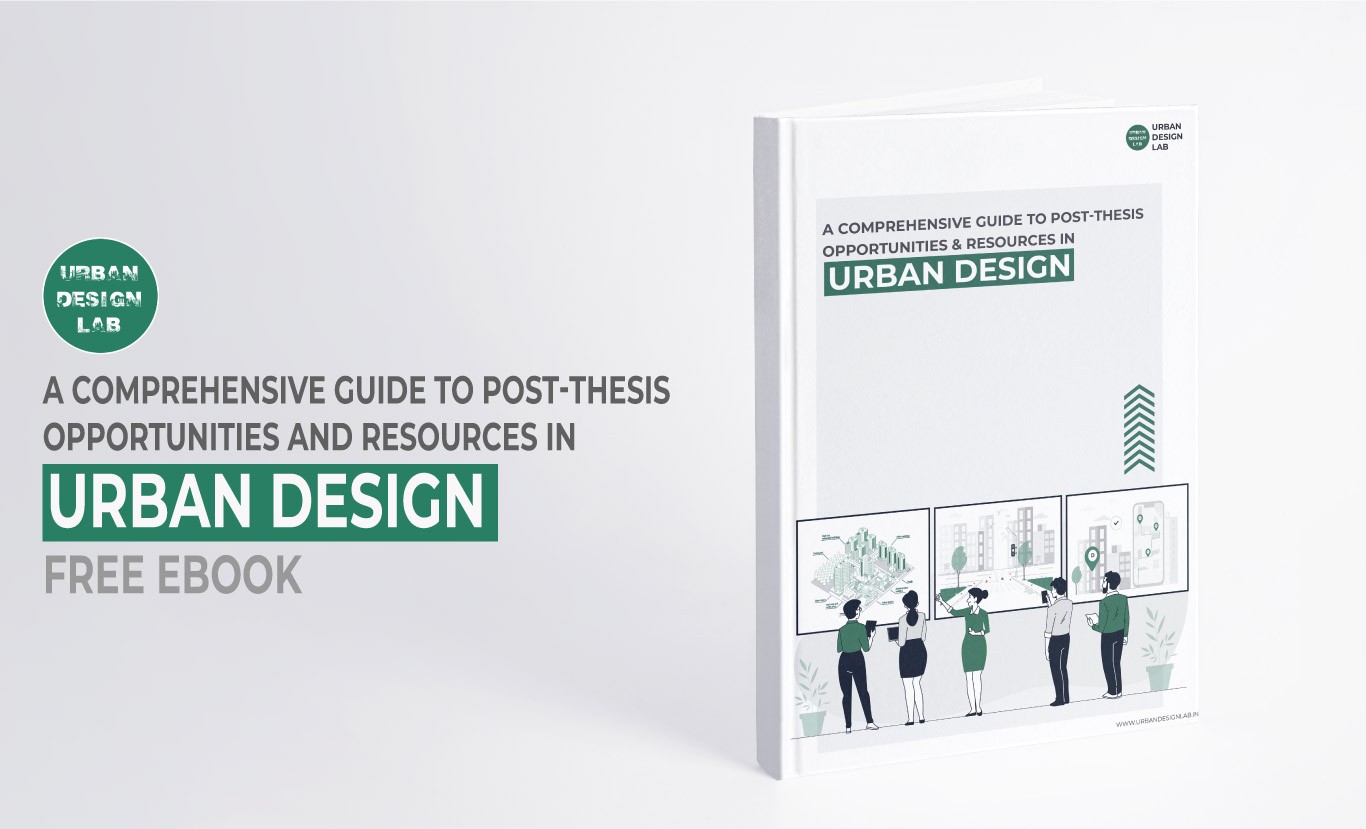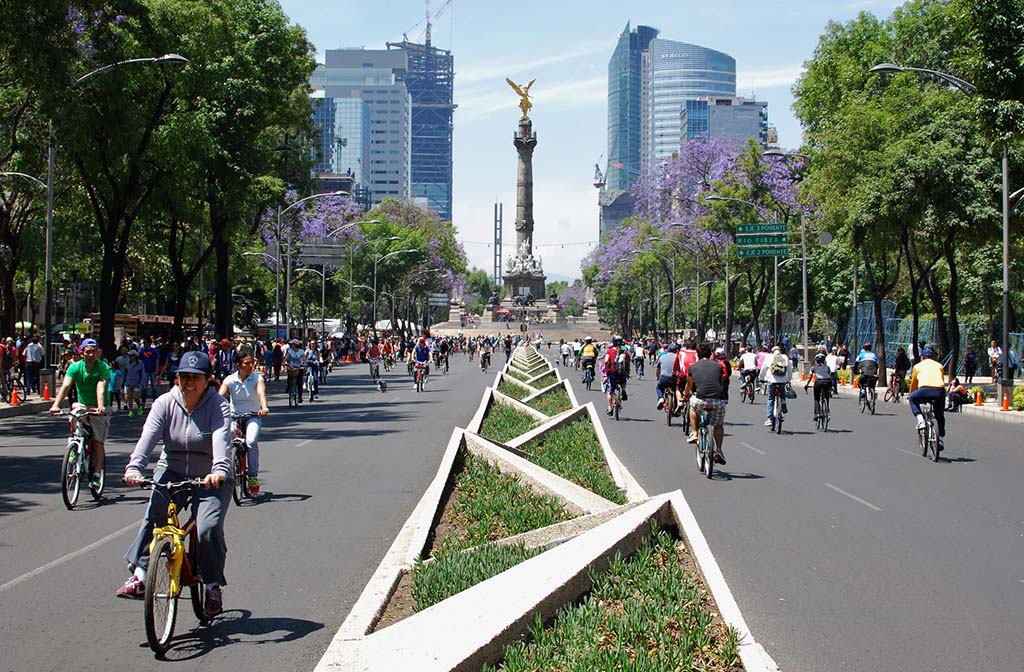
Urban Heat Island Effect: Mitigation Strategies for Cooler Cities
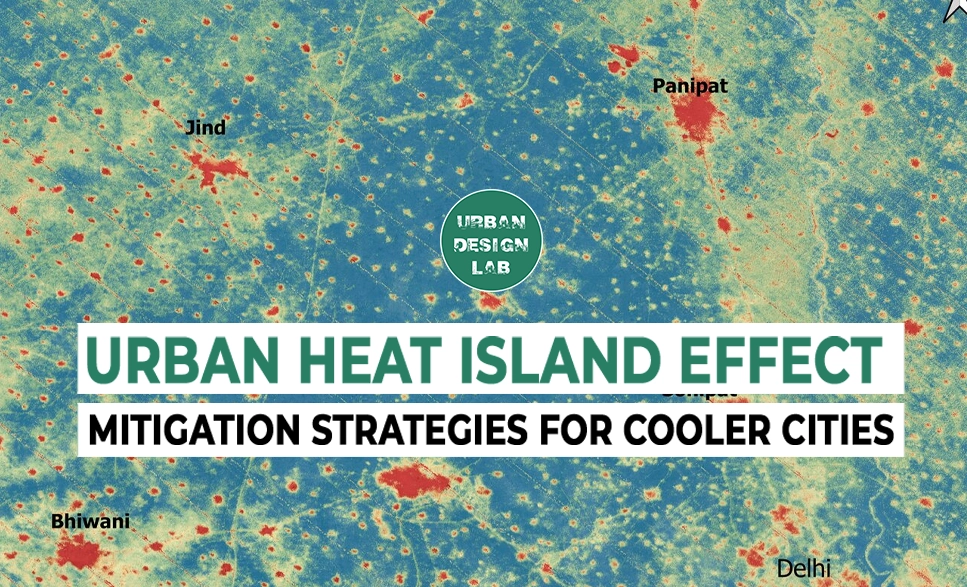
As urban areas continue to grow, the Urban Heat Island (UHI) effect becomes increasingly pronounced. This phenomenon occurs when dense infrastructure and buildings absorb and retain heat, making cities significantly warmer than their rural counterparts. Elevated temperatures in urban settings lead to serious health risks, heightened energy consumption, and increased greenhouse gas emissions. In the face of global warming, addressing the UHI effect is essential for improving city livability and resilience. Implementing effective mitigation strategies—such as greening initiatives, the use of reflective materials, and innovative building designs—can substantially reduce UHI intensity, yielding both environmental and economic advantages.
Introduction
As urban areas continue to expand, the Urban Heat Island (UHI) effect becomes increasingly pronounced. This phenomenon occurs when dense infrastructure and buildings absorb and retain heat, making cities significantly warmer than their rural counterparts. Elevated temperatures in urban settings lead to serious health risks, heightened energy consumption, and increased greenhouse gas emissions. In the face of global warming, addressing the UHI effect is essential for improving city livability and resilience. Implementing effective mitigation strategies—such as greening initiatives, the use of reflective materials, and innovative building designs—can substantially reduce UHI intensity, yielding both environmental and economic advantages.
In recent decades, rapid urbanization has transformed landscapes worldwide, with more than half of the global population now residing in cities. This shift has intensified the Urban Heat Island (UHI) effect, as expanding urban areas replace natural vegetation with heat-absorbing surfaces like concrete and asphalt. The consequences of UHI extend beyond mere temperature increases; they exacerbate existing environmental challenges, such as air pollution and water scarcity, while also straining urban infrastructure. Moreover, the heightened temperatures can diminish the quality of life for city residents, making everyday activities more strenuous and increasing the vulnerability of urban populations to extreme weather events. As cities continue to grow, integrating effective UHI mitigation strategies becomes essential not only for environmental sustainability but also for ensuring the health, well-being, and resilience of urban communities.
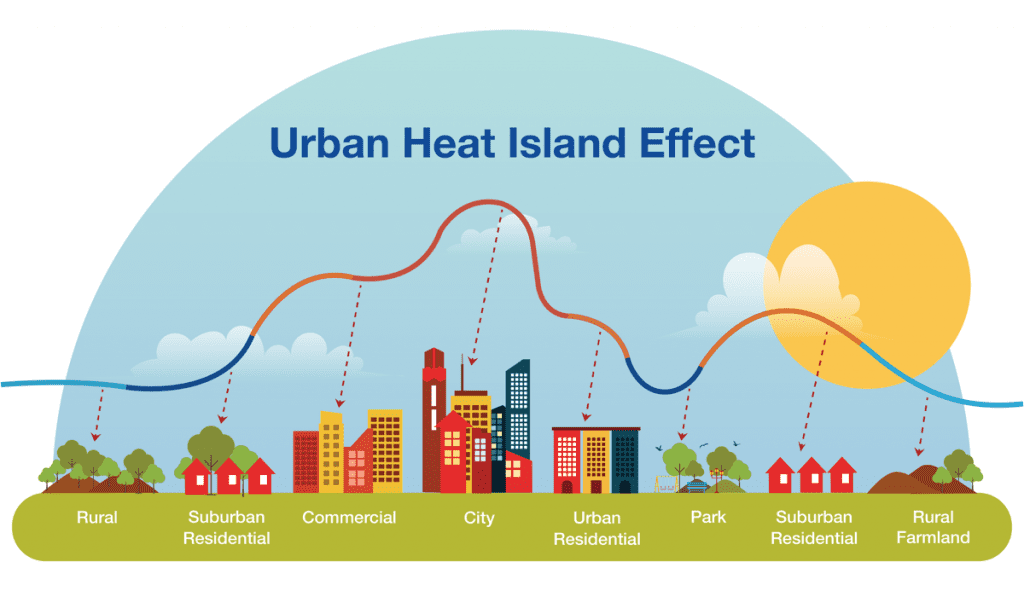
Causes of the Urban Heat Island Effect
The Urban Heat Island (UHI) effect is predominantly driven by human activities and urban development. One of the primary contributors is the extensive use of impervious surfaces such as asphalt, concrete, and roofting materials, which can absorb up to 90% of solar radiation during the day and release heat slowly at night. According to the Environmental Protection Agency (EPA), cities can experience temperatures 1-3°C higher than their rural surroundings due to these materials. For instance, Phoenix, Arizona, has reported that its urban areas are significantly warmer than nearby rural regions, exacerbating the UHI effect and increasing the demand for air conditioning.
In addition to surface materials, vehicular traffic, industrial activities, and the widespread use of air conditioning units contribute substantially to elevated urban temperatures. Vehicles emit waste heat through exhaust systems and engine operations, while factories and power plants release large amounts of heat and greenhouse gases into the atmosphere. A study by NASA highlights that cities like New York and Tokyo emit millions of tons of heat annually from these sources alone, intensifying the UHI effect. Moreover, the continuous operation of air conditioning systems not only consumes vast amounts of energy but also releases additional heat, creating a feedback loop that further warms the urban environment.
Another critical factor exacerbating the UHI effect is the dense arrangement of buildings and the lack of vegetation in urban landscapes. High-rise buildings and closely packed structures obstruct natural airflow, preventing the dispersion of heat and trapping warm air within the city. The World Health Organization (WHO) reports that urban areas with minimal green spaces can experience temperature increases of up to 5°C during heatwaves, compared to areas with abundant vegetation. For example, Los Angeles has implemented urban greening initiatives to combat this issue, such as increasing tree canopy cover and developing green rooftops, which have proven effective in enhancing airflow and reducing ambient temperatures. Understanding these multifaceted causes is essential for developing targeted and effective mitigation strategies to alleviate the UHI effect and promote sustainable urban living.
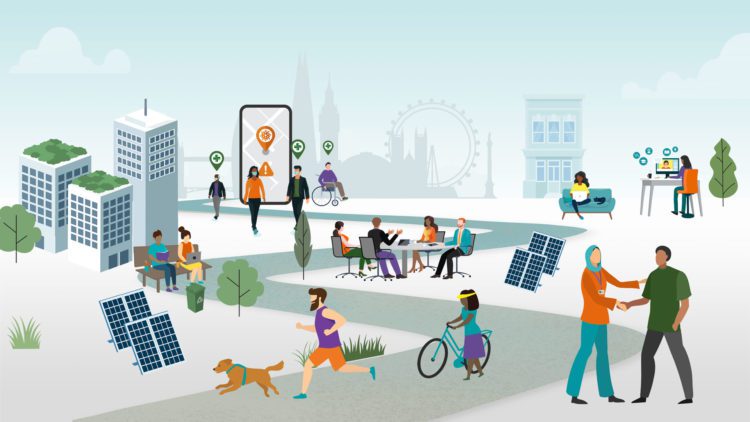
Source: Website Link
Impact on Urban Health
The Urban Heat Island (UHI) effect poses severe health risks, especially during intense heatwaves. According to the World Health Organization (WHO), extreme heat events can lead to an estimated additional 250,000 heat-related deaths annually worldwide by 2050 if no mitigation measures are implemented. Vulnerable populations, including the elderly, children, and individuals with pre-existing respiratory conditions, are particularly susceptible to heat-related illnesses such as heatstroke and dehydration. For instance, during the European heatwave of 2003, cities like Paris experienced a significant spike in mortality rates, with over 14,000 excess deaths reported. These extreme temperatures not only increase the incidence of hospital admissions but also strain healthcare systems, making it imperative for urban areas to prioritize cooling strategies.
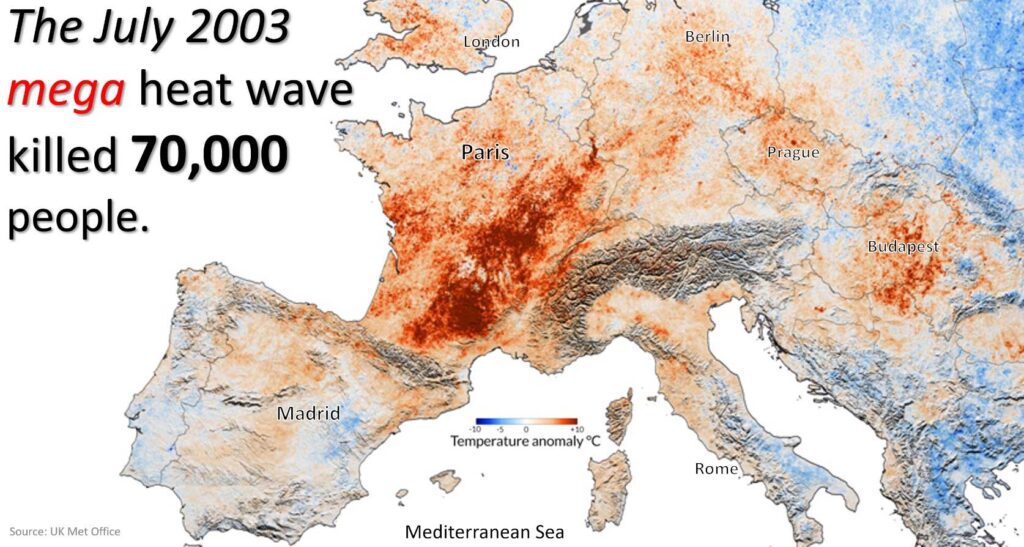
-1
Increased Energy Demand and Economic Implications
Warmer urban temperatures driven by the Urban Heat Island (UHI) effect significantly escalate energy demand, particularly for air conditioning systems. According to the Environmental Protection Agency (EPA), UHI can increase a city’s energy consumption for cooling by up to 15%, leading to over $1 billion in additional electricity costs annually for major metropolitan areas. This surge strains power grids, heightening the risk of outages during peak summer months and inflating utility bills for residents and businesses alike. Moreover, the heightened energy usage results in increased greenhouse gas emissions, contributing to the relentless cycle of climate change. Economically, cities allocate millions of dollars each year to mitigate these costs, which could be substantially reduced through effective UHI mitigation strategies such as green infrastructure and reflective materials. By implementing these measures, cities can not only alleviate the financial burden on their power systems and residents but also significantly decrease their carbon footprints, fostering a more sustainable and economically resilient urban environment.

-1
Green Infrastructure as a Key Mitigation Strategy
Integrating green infrastructure emerges as one of the most effective strategies to combat the Urban Heat Island (UHI) effect, offering multifaceted environmental and economic benefits. Implementing parks, green roofs, and urban forests not only provides essential shade but also leverages transpiration to release moisture into the air, thereby cooling surrounding areas. According to a study by the Environmental Protection Agency (EPA), green roofs can reduce rooftop temperatures by up to 30%, while strategically planted trees can lower ambient temperatures in their vicinity by 2-4°C. For instance, the Million Tree Initiative in New York City has significantly contributed to lowering urban temperatures, enhancing biodiversity, and improving residents’ mental well-being. Additionally, green infrastructure plays a pivotal role in managing stormwater runoff, reducing the risk of urban flooding, and enhancing overall urban resilience. By expanding green spaces, cities not only mitigate the UHI effect but also foster healthier ecosystems and more livable communities, underscoring the critical importance of sustainable urban design in addressing climate challenges.

-1
Reflective and Cool Materials
Implementing reflective materials for pavements and roofs is a highly effective strategy to mitigate the Urban Heat Island (UHI) effect, significantly lowering urban temperatures by reflecting rather than absorbing sunlight. Cool roofs and cool pavements, which use light-colored and high-albedo materials, can reduce surface temperatures by up to 50°F (10°C), leading to a noticeable decrease in ambient air temperatures. For example, Los Angeles’ adoption of cool pavements in specific neighborhoods resulted in a 15% reduction in surface temperatures and a 3°C decrease in local air temperatures, according to the Los Angeles Department of Water and Power (LADWP). These materials not only provide a cost-effective solution by lowering the need for excessive air conditioning, thereby reducing energy consumption and electricity costs, but they also contribute to a decrease in greenhouse gas emissions, breaking the cycle that exacerbates climate change. Additionally, reflective surfaces enhance urban aesthetics and can be seamlessly integrated with other UHI mitigation strategies such as green infrastructure and smart urban planning. By adopting reflective and cool materials, cities can achieve substantial environmental and economic benefits, fostering more sustainable and livable urban environments.
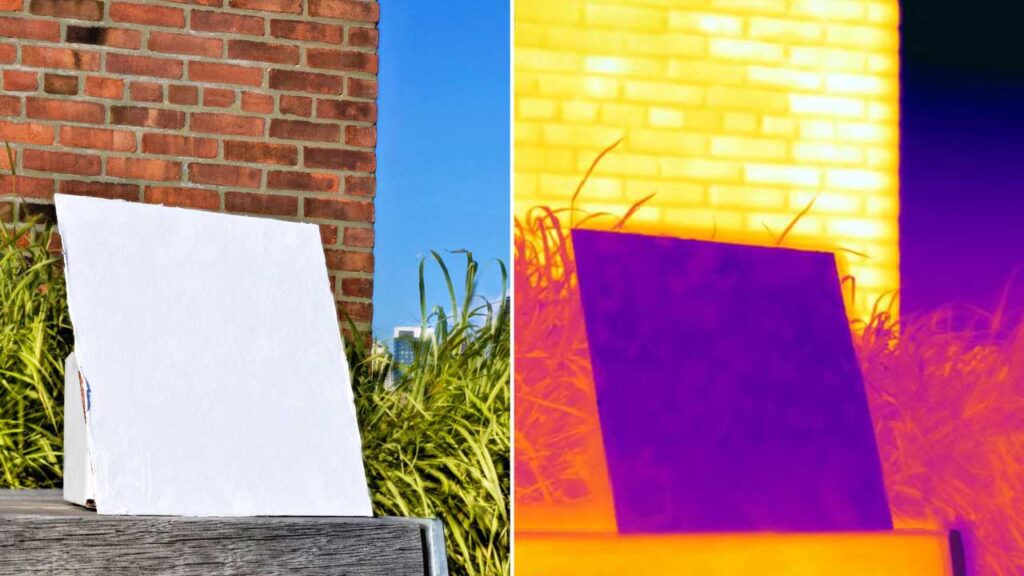
-1
Water-Based Cooling Systems
Water-based cooling systems are a highly effective strategy for mitigating the Urban Heat Island (UHI) effect, leveraging the natural cooling properties of water to reduce ambient temperatures in urban environments. Water bodies such as lakes, ponds, and fountains facilitate evaporative cooling, where water absorbs heat from the surrounding air as it evaporates, thereby lowering temperatures. According to the United States Environmental Protection Agency (EPA), the integration of water features can decrease local temperatures by up to 5°C, providing significant relief during heatwaves. Additionally, advanced installations like misting systems and water walls in public spaces can further enhance cooling effects, creating microclimates that improve comfort for residents and visitors. For instance, Singapore’s Gardens by the Bay utilizes expansive water features to maintain cooler temperatures within its landscaped areas, demonstrating the scalability and adaptability of these systems across different climates. While traditionally more prevalent in arid regions, water-based cooling solutions can be customized to suit various urban settings, offering versatile and sustainable options for cities worldwide. When combined with other UHI mitigation strategies such as green infrastructure and reflective materials, water-based systems not only contribute to temperature regulation but also enhance urban aesthetics, support biodiversity, and promote community well-being. By adopting these innovative cooling technologies, cities can achieve a harmonious balance between urban development and environmental sustainability, fostering more resilient and livable urban landscapes.
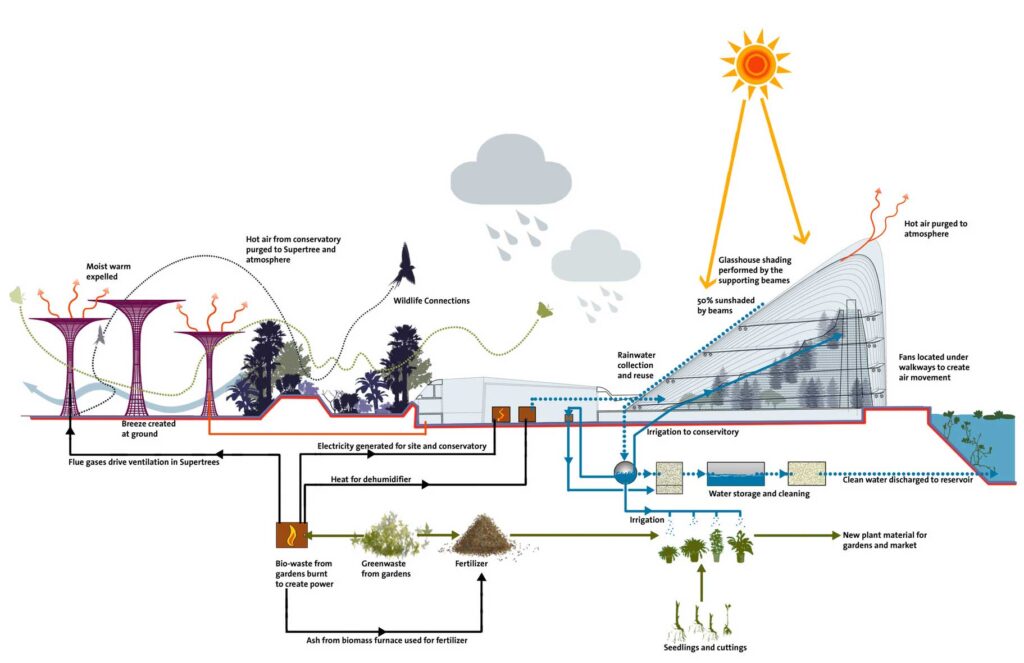
-1
Urban Planning and Design Interventions
Effective urban planning and design interventions are paramount in managing and mitigating the Urban Heat Island (UHI) effect, playing a crucial role in creating resilient and sustainable cities. By designing open, breathable urban spaces that facilitate natural airflow, cities can significantly reduce heat entrapment. According to a study by the World Resources Institute (WRI), cities that implement strategic urban ventilation corridors can lower ambient temperatures by up to 2°C. Adequate spacing and strategic orientation of buildings enhance natural cooling through ventilation, thereby increasing a city’s ability to withstand extreme heat events. For instance, Barcelona’s Superblocks initiative restructures urban layouts to improve airflow and reduce heat accumulation, resulting in cooler and more comfortable neighborhoods. Integrating parks, tree-lined streets, and green corridors into urban designs not only contributes to UHI reduction but also promotes biodiversity, improves air quality, and enhances the overall livability of urban environments. The Singapore Urban Redevelopment Authority has successfully incorporated extensive green spaces and vertical greenery in its urban planning, achieving a 15% reduction in local temperatures and fostering a healthier ecosystem. By prioritizing sustainable urban design, cities can effectively combat the UHI effect, ensuring healthier, more livable, and environmentally resilient communities for their residents.
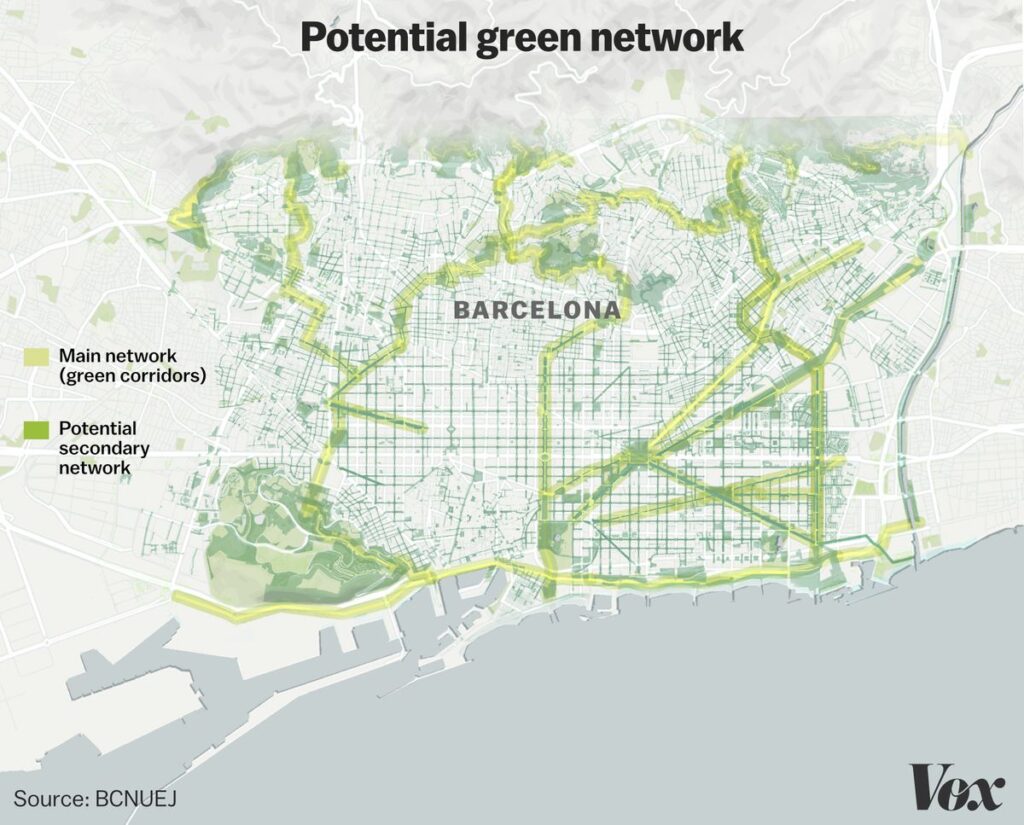
-1
Conclusion
Addressing the Urban Heat Island (UHI) effect is imperative for creating sustainable, livable, and resilient cities in the face of escalating climate change. By implementing a combination of green infrastructure, such as parks, green roofs, and urban forests, alongside the adoption of reflective and cool materials and water-based cooling systems, cities can significantly reduce their ambient temperatures and mitigate the adverse impacts of UHI. Furthermore, thoughtful urban planning and design interventions that promote natural airflow and incorporate green spaces play a crucial role in enhancing a city’s ability to withstand extreme heat events. These strategies not only lower energy demand and electricity costs but also improve urban biodiversity, air quality, and the overall mental well-being of residents. As urbanization continues to accelerate globally, proactive measures to combat the UHI effect are essential for fostering healthier and more economically resilient urban environments.
References
- Environmental Protection Agency (EPA).
Heat Island Effect.
Retrieved December 10, 2024, from https://www.epa.gov/heatislands - Los Angeles Department of Water and Power (LADWP).
Cool Pavements Initiative.
Retrieved December 10, 2024, from https://www.ladwp.com/cool-pavements - World Resources Institute (WRI).
Urban Ventilation Corridors: Enhancing Airflow in Cities.
Retrieved December 10, 2024, from https://www.wri.org/urban-ventilation - United States Environmental Protection Agency (EPA).
Benefits of Green Infrastructure.
Retrieved December 10, 2024, from https://www.epa.gov/green-infrastructure - Singapore Urban Redevelopment Authority (URA).
Vertical Greenery and Urban Planning.
Retrieved December 10, 2024, from https://www.ura.gov.sg/vertical-greenery

Kartikeya Mishra
About the author
Kartikeya Mishra is an undergraduate student working towards a Bachelor’s degree in Urban and Regional Planning at the School of Planning and Architecture, Bhopal. He is particularly passionate about various urban planning domains, including climate change, urbanism concepts, road safety, and urban design. In addition to his academic pursuits in urban planning, Kartikeya is also an accomplished graphic designer and photographer.
Related articles


Architecture Professional Degree Delisting: Explained

Periodic Table for Urban Design and Planning Elements


History of Urban Planning in India

UDL Illustrator
Masterclass
Visualising Urban and Architecture Diagrams
Session Dates
17th-18th January 2026

Urban Design Lab
Be the part of our Network
Stay updated on workshops, design tools, and calls for collaboration
Curating the best graduate thesis project globally!

Free E-Book
From thesis to Portfolio
A Guide to Convert Academic Work into a Professional Portfolio”
Recent Posts
- Article Posted:
- Article Posted:
- Article Posted:
- Article Posted:
- Article Posted:
- Article Posted:
- Article Posted:
- Article Posted:
- Article Posted:
- Article Posted:
- Article Posted:
Sign up for our Newsletter
“Let’s explore the new avenues of Urban environment together “


























